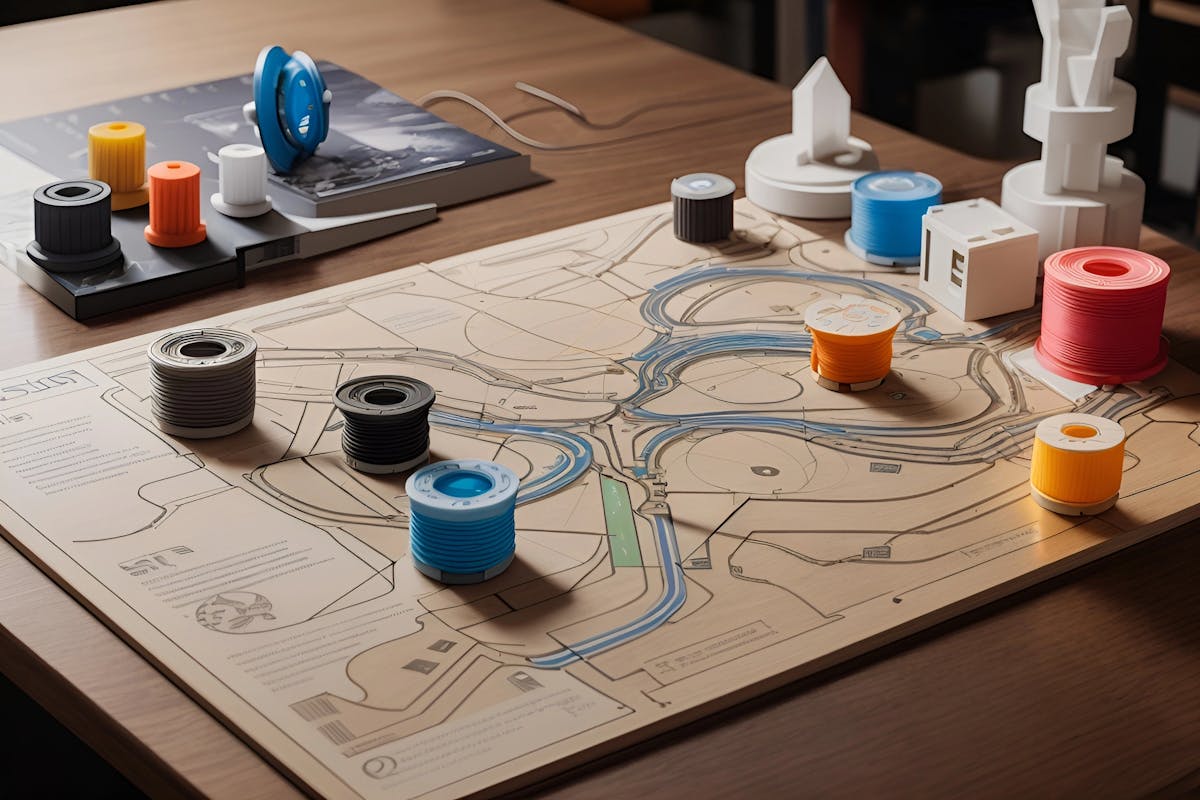
3D Printing Unveiled:A Beginner's Guide
WHAT IS ADDITIVE MANUFACTURING/3D PRINTING?
Additive manufacturing is also popularly known as 3D printing. As the name suggests manufacturing of products also proceeds further in a similar manner i.e., by the addition of material in layers format, this process is followed till the desired object is complete, hence the name is additive manufacturing. Here the final object is made based on a digital model, which is basically a CAD model or scanned model from a 3D object scanner. It's also known as 3D printing because it provides an extra axis i.e., the z-axis unlike in normal printers which provide only 2 axes, helps to create a 3D object Therefore it's known as 3D printing.
HOW DOES 3D PRINTING CREATE OBJECTS COMPARED TO TRADITIONAL METHODS?
Traditional manufacturing methods generally follow subtractive manufacturing techniques that involve even formative processes, where the material is removed or shaped from a larger piece to create the desired object. This includes techniques like machining, milling, modelling and many more. 3D printing is quite different from traditional manufacturing methods in it begins by Creating 3D objects from CAD files and then is sliced using various slicing software which slices the 3D model into fine layers which is then loaded to the printer where repeatedly layering down of thin layers of materials occurs Until the final product is completed. This uses software like Autodesk Fusion 360, Ultimaker Cura, Prusa Slicer, Tinker Cad, and Blender.
WHAT IS THE DIGITAL BLUEPRINT AND WHY IT’S USED IN 3D PRINTING?
A digital blueprint for 3D printing is a computer-aided CAD file. It contains the required instructions for a 3D printer to create an object. These blueprints can be created using various CAD software and saved in different formats like STL, OBJ, or AMF.
WHAT TYPES OF MATERIALS ARE USED IN 3D PRINTING?
These materials can are generally used apart from these there are other materials available which can also be used:
PLASTICS -PLA (Polylactic Acid), ABS (Acrylonitrile Butadiene Styrene), PETG (Polyethylene Terephthalate Glycol), TPU (Thermoplastic Polyurethane), Nylon, PVA (Polyvinyl Alcohol), PC(Polycarbonate), HIPS (High-impact polystyrene) etc.
METALS -Aluminium, Titanium, Copper, Steel, Cobalt-chrome, Inconel.
CERAMICS Porcelain,Alumina,ZirconiaCOMPOSITES Carbon Fiber, Glass Fiber, Kevlar
ADVANCED MATERIALS Graphene, Carbon Nanotubes, Silicon Carbide
POLYMERS -PEEK (Polyether Ether Ketone), PMMA(Polymethylmethacrylate)
ULTEM(Polyetherimide), ASA(Acrylonitrile Styrene Acrylate) and many more.
MAKE YOUR FIRST 3D PRINT BY FOLLOWING THESE SIMPLE STEPS
Creating a 3D print in four steps:
1. Design: Create or download a 3D model in a compatible format (e.g., STL,OBJ,AMF,3MF).
2. Prepare: Set up your 3D printer, load filament, and ensure proper settings.
3. Slice and Print: Use slicing software to prepare your model, transfer it to the printer, and start printing.
4. Post-Processing: Remove the printed object, clean up any supports, and finish as needed (e.g., sanding, painting).